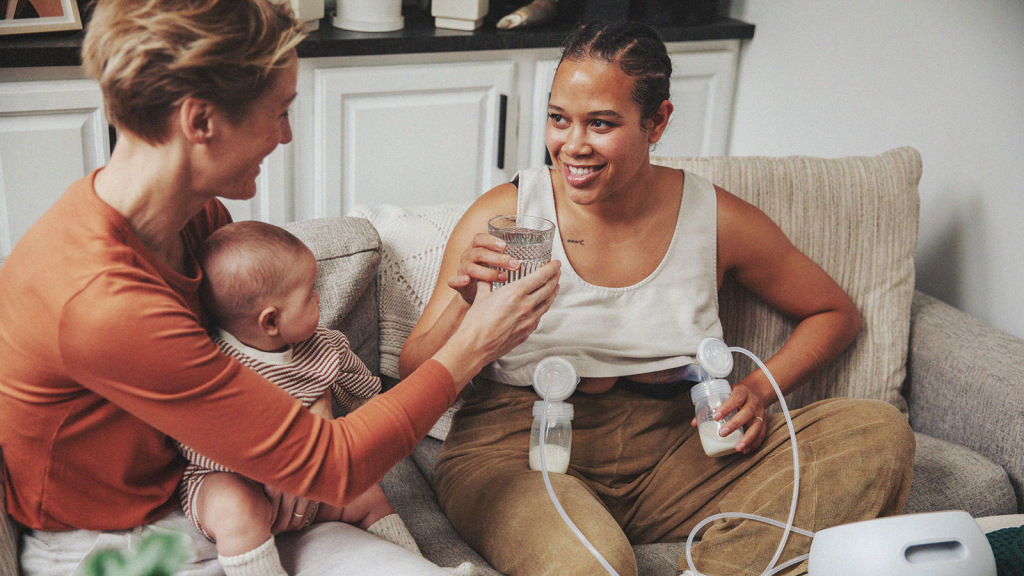Understanding Breast Pump Parts and How to Use Them
Here’s all you need to know about the different parts of your breast pump
From flanges, tubing, membranes, and pump connectors to battery packs and power adaptors, your breast pump relies on many different working parts to help you deliver milk to your baby. While most of them come with your breast pump, there are some parts and accessories you need to know (and know when to replace) for a smoother pumping experience. Here’s a rundown of the essentials and additional resources to help you get access to breast pump accessories.
Understanding Breast Pump Parts
The pumps come with the basic parts you need for pumping: The pump itself, valves, membranes, breast shields, tubing, connectors, and anything needed to keep it powered including power adaptors and battery packs. All of these items qualify as breast pump accessories, which can be replaced if needed. Here’s a handy breakdown of the different accessories, and some tips for choosing them.
Valves and Membranes
Breast pump valves and membranes work to create suction. These items will come with your breast pump but should be replaced about once a month or whenever they start to get worn out. Given how important they are for pump function, it’s a good idea to have a few extra in your pumping bag in case of a tear or other dysfunction.
Breast Shields
Breast shields, or flanges, help maximize milk output and prevent milk-duct compression. These funnel-shaped parts are placed over the nipple and areola to create a seal. When pumping, they gently pull on the nipple, mimicking a baby’s suction and leading to the release of milk. Having the correct flange size is vital for milk output. While choosing a breast shield that’s too big can compress and reduce milk flow, choosing one that’s too small can cause nipple pain and discoloration, and lead to low milk production.
Our advice? Use a flange size chart, such as the one Medela provides, to prevent this. You may also want to try out a few different breast shield sizes to find the right one for you. Many breast pump brands have their own sizing system, so make sure to check out your breast pump manufacturer’s website to confirm your size.
Tubing
The clear plastic tubing that comes with your breast pump connects the flange to the pump. Damaged tubing results in less suction power, so try to have extra on hand in case of issues. Also, make sure to keep your tubing dry, or else it may get moldy. You can prevent mold by running the motor of your breast pump with the tubing attached to help clear out condensation inside the tubes. If they still need drying, wave or twirl them in the air to get that excess moisture out before storing your breast pump.
For more tips on keeping your breast pump clean, follow these guidelines and refer to your specific pump’s manual.
Breast Milk Bottles and Storage Bags
Breast milk bottles and storage bags can help you feed your baby or stash your liquid gold away for later. Bottles tend to be brand-specific and can be used for feeding with nipple attachments. However, they aren’t good for freezing. To build up a supply of frozen breast milk, pump directly into storage bags instead—and make sure to follow these storage guidelines to make the most of your supply.
Breast Pump Connectors
These pieces connect breast shields to the milk collection bottles. Not all pumps have separate connectors, but the ones that do make cleaning your breast pump easier because you’re able to take more of it apart to reach those tiny nooks and crannies. Additionally, having separate connectors lets you try out different breast shield sizes while keeping the same connectors.
Battery Packs and Batteries
Battery-operated breast pumps make traveling while breastfeeding so much easier. Some come with their own battery packs though rarely with the accompanying batteries. Before your battery-powered breast pump arrives, look into what kind of batteries you’ll need and store some in the car, at the office, and around the house for convenience while pumping.
Power Adapters
To power a breast pump that isn’t cordless, you’ll need the right adapter. Also called a transformer or power cord, breast pump power adapters come in different wattages and sizes, so make sure to select a power option that’s compatible with your breast pump brand.
Some breast pumps even have portable vehicle adapters and USB ports. Determine which adapter is right for your model, and then get an extra to keep in the car or have in your bag at all times.
Carrying Bags
Although they’re not essential, bags, backpacks, and totes specifically meant to carry your pump sure are convenient. These carriers make it easy to take your pump with you anywhere you go. Carrying bags typically come with additional pockets to hold breast milk storage containers, extra parts such as tubing or flanges, and anything else you may need while pumping—including snacks. (Don’t forget, breastfeeding burns as many as 500 calories per day, so you may find you need a boost after a session.)
We have great news—many of these essential accessories are often available for free through insurance. Make feeding your baby easier, more convenient, and less expensive by ordering your insurance-covered breast pump accessories through The Lactation Network.



